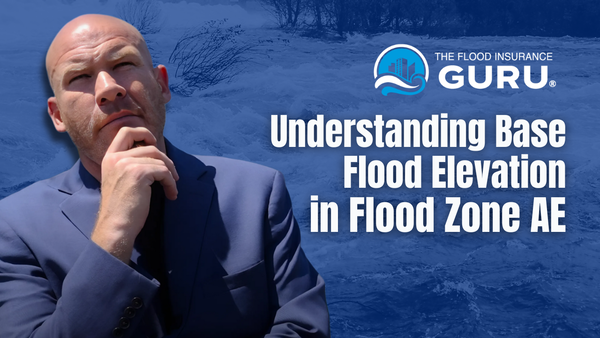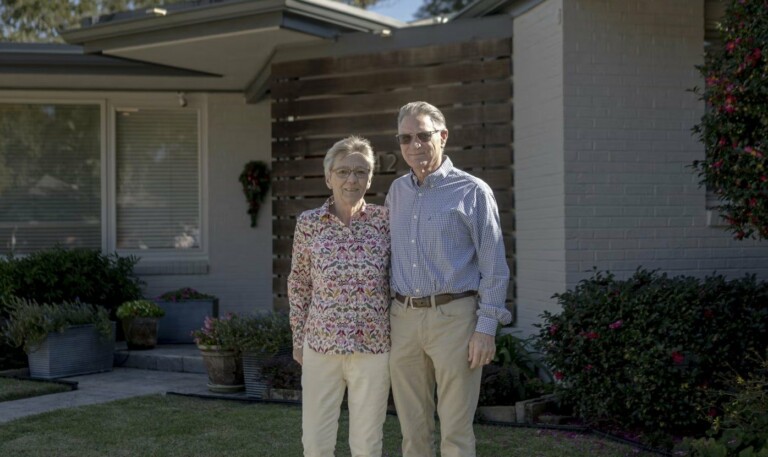Understanding Base Flood Elevation in Flood Zone AE
Base Flood Elevation (BFE) in Flood Zone AE is a critical concept for property owners and developers in the United States. This measurement, shown on Flood Insurance Rate Maps, indicates the height floodwaters are expected to reach during a 100-year flood event.
Understanding BFE is crucial for assessing flood risk and determining insurance requirements in these high-risk areas. Keep reading to discover how BFE impacts building regulations, insurance rates, and preparedness strategies in Flood Zone AE.
What Is Base Flood Elevation (BFE) in Flood Zone AE?
I’ve found that understanding Base Flood Elevation (BFE) is crucial when dealing with Flood Zone AE properties. The Federal Emergency Management Agency uses BFE to determine the height water is expected to rise during a 100-year flood event, which has a 1% annual probability of occurring. This measurement is particularly significant for homeowners in areas near rivers or other water bodies. The National Flood Insurance Program relies on BFE data to set insurance rates and building requirements, including restrictions on basement construction. By grasping the concept of BFE in Flood Zone AE, I’ve been better equipped to assess flood risks and make informed decisions about property management and insurance coverage.
Defining Base Flood Elevation
I’ve learned that Base Flood Elevation (BFE) is a critical measurement used in flood risk assessment and insurance calculations. It represents the projected height of floodwaters during a 100-year flood event, which impacts building codes, floor elevation requirements, and insurance premiums. FEMA produces flood maps that display BFE data, helping me understand the potential risks to coastal and inland properties. This information has proven invaluable for ensuring the accessibility and safety of structures in flood-prone areas:
|
BFE Component |
Description |
Impact |
|---|---|---|
|
Elevation Measurement |
Height above sea level |
Determines minimum floor height |
|
Flood Maps |
FEMA-produced resources |
Visualizes flood risk areas |
|
Insurance Rates |
Based on BFE and structure height |
Affects premium costs |
Importance of BFE in Flood Risk Assessment
I’ve found that Base Flood Elevation plays a crucial role in assessing flood risks for properties in Flood Zone AE. By comparing a building’s lowest floor elevation to the BFE, I can determine its vulnerability to flooding and potential water damage. This information helps me make informed decisions about plumbing installations and other structural considerations relative to sea level. When evaluating flood risk, I often refer to BFE-related FAQs to ensure I’m considering all aspects of elevation and potential impacts on a property.
Flood Zone AE and Its Relation to BFE
I’ve learned that Flood Zone AE is a high-risk area where flood insurance is mandatory for federally backed mortgages. The Base Flood Elevation in this zone is crucial for flood control measures and determining potential water damage risks. When assessing properties in Zone AE, I always check the Flood Insurance Rate Map to document the specific BFE, which helps me understand how flood events might impact structures near dams or other water bodies.
How Is BFE Determined in Flood Zone AE?
I’ve discovered that determining Base Flood Elevation (BFE) in Flood Zone AE involves a complex process utilizing various assessment tools and technologies. FEMA flood maps play a crucial role in this determination, providing essential information for construction projects in special flood hazard areas. Through hydrological and hydraulic analyses, experts can accurately predict flood levels for specific locations, including those near lakes or other water bodies.
I’ve learned that understanding these processes is vital for property owners and developers, as BFE data impacts everything from building codes to insurance rates. By researching my property’s zip code and consulting FEMA resources, I’ve gained valuable insights into flood risks and mitigation strategies for my area.
Assessment Tools and Technologies Used
I use various assessment tools and technologies to determine Base Flood Elevation in Flood Zone AE. These include advanced Geographic Information Systems (GIS), LiDAR (Light Detection and Ranging) technology, and hydraulic modeling software. By analyzing data from rain gauges, stream gauges, and historical flood records, I can accurately map floodplain boundaries and assess flood hazards. I also consider the impact of levees and other flood control structures on potential flood levels. This comprehensive approach allows me to generate precise BFE calculations for different areas within Flood Zone AE:
|
Assessment Tool |
Purpose |
Data Collected |
|---|---|---|
|
GIS |
Mapping and spatial analysis |
Topography, land use |
|
LiDAR |
High-resolution elevation mapping |
Terrain elevation |
|
Hydraulic modeling |
Simulate flood scenarios |
Water flow, velocity |
|
Rain gauges |
Measure precipitation |
Rainfall intensity, duration |
Role of FEMA Flood Maps in Determining BFE
I rely heavily on FEMA flood maps when determining Base Flood Elevation in Flood Zone AE. These maps provide crucial information about flood risks, drainage patterns, and stream locations, which I use to assess potential hazards and develop emergency management strategies. By examining these maps, I can identify areas where an insurance policy might be necessary and help property owners understand their flood risk profile:
|
Map Component |
Information Provided |
Relevance to BFE |
|---|---|---|
|
Flood Zone Boundaries |
Delineation of high-risk areas |
Identifies properties requiring flood insurance |
|
Stream Network |
Location of waterways |
Helps predict flood patterns |
|
Elevation Contours |
Topographic information |
Used to calculate flood depths |
|
Floodway Designations |
Areas of highest flood risk |
Informs stricter building regulations |
Understanding Hydrological and Hydraulic Analyses
I’ve found that hydrological and hydraulic analyses are essential for determining Base Flood Elevation in Flood Zone AE. These studies help me assess how water moves through a watershed and predict flood levels, which is crucial for setting appropriate mortgage terms and insurance rates. I use sophisticated computer models to simulate various flood scenarios, taking into account factors like rainfall intensity, soil conditions, and topography:
|
Analysis Type |
Purpose |
Key Factors Considered |
|---|---|---|
|
Hydrological |
Estimate runoff volume |
Rainfall, land use, soil type |
|
Hydraulic |
Model water flow |
Channel geometry, roughness, slope |
|
Combined |
Determine flood extents |
Runoff volume, flow characteristics |
The Impact of BFE on Flood Insurance Rates
I’ve discovered that Base Flood Elevation (BFE) significantly influences flood insurance rates in Flood Zone AE. As a property owner, I’ve learned that understanding how BFE affects premiums is crucial for managing insurance costs effectively. By comparing my building’s lowest floor elevation to the BFE, I can estimate potential insurance expenses and take steps to mitigate flood risks. This knowledge has helped me make informed decisions about flood insurance coverage and implement necessary structural modifications to reduce premiums. I’ll explain how BFE impacts insurance rates and share insights on calculating costs based on this critical measurement.
How BFE Influences Insurance Premiums
I’ve found that Base Flood Elevation significantly impacts insurance premiums in Flood Zone AE. The lower a building’s lowest floor is relative to the BFE, the higher the insurance rates tend to be. I’ve learned that elevating structures above the BFE can lead to substantial premium reductions, sometimes up to 60% for every foot above BFE. This knowledge has helped me make informed decisions about property improvements and insurance coverage.
Calculating Insurance Costs Based on BFE
I’ve learned that calculating insurance costs based on Base Flood Elevation involves comparing a building’s lowest floor elevation to the BFE. I use this information to determine the building’s flood risk and estimate potential premium costs. By consulting FEMA’s flood insurance rate tables and considering factors like coverage amount and deductible, I can accurately project insurance expenses for properties in Flood Zone AE.
Building Requirements and BFE in Flood Zone AE
I’ve found that understanding building requirements in relation to Base Flood Elevation (BFE) is crucial for property owners in Flood Zone AE. Through my research, I’ve learned that FEMA and local regulations often mandate specific elevation standards for new construction and substantial improvements to existing structures. These requirements aim to minimize flood damage and ensure building safety. I’ll explore the minimum building elevations required based on BFE and discuss various retrofitting options available for existing structures that may not meet current standards. This knowledge has been invaluable in helping me navigate flood zone regulations and make informed decisions about property improvements.
Minimum Building Elevations According to BFE
I’ve learned that in Flood Zone AE, the minimum building elevation is typically set at or above the Base Flood Elevation. Local floodplain management regulations often require the lowest floor of residential structures to be elevated to or above the BFE, while non-residential buildings may be floodproofed to that level. I’ve found that some communities even mandate additional freeboard, requiring structures to be elevated 1-3 feet above the BFE for extra protection.
Retrofitting Options for Existing Structures
I’ve explored several retrofitting options for existing structures in Flood Zone AE that don’t meet current BFE requirements. These include elevation, wet floodproofing, dry floodproofing, and relocation. I’ve found that each method has its advantages and challenges, depending on the building’s characteristics and local regulations:
|
Retrofitting Option |
Description |
Advantages |
Challenges |
|---|---|---|---|
|
Elevation |
Raising the structure above BFE |
Significant flood protection |
Cost, structural integrity |
|
Wet Floodproofing |
Allowing water to enter and exit |
Cost-effective for some buildings |
Limited protection, cleanup required |
|
Dry Floodproofing |
Sealing the structure to prevent water entry |
Maintains building aesthetics |
Not suitable for all construction types |
|
Relocation |
Moving the structure to higher ground |
Eliminates flood risk |
High cost, land availability |
Navigating Legal and Regulatory Frameworks
I’ve discovered that navigating the legal and regulatory frameworks surrounding Base Flood Elevation in Flood Zone AE can be complex. Through my research, I’ve learned that both local and federal regulations play crucial roles in determining building requirements and flood insurance obligations. I’ve found it essential to understand how local building codes enforce BFE compliance and how federal regulations impact homeowners in AE zones. This knowledge has helped me make informed decisions about property development and risk management in flood-prone areas.
Local Building Codes and BFE Compliance
I’ve found that local building codes play a crucial role in enforcing BFE compliance in Flood Zone AE. These codes often require new construction and substantial improvements to meet or exceed the Base Flood Elevation standards set by FEMA. I’ve learned that many communities have adopted additional freeboard requirements, mandating structures to be built even higher than the BFE for extra protection:
|
Requirement |
Description |
Purpose |
|---|---|---|
|
Elevation Certificate |
Document verifying building height |
Ensure compliance with BFE |
|
Floodproofing Certificate |
Proof of watertight design |
Alternative to elevation for non-residential |
|
Freeboard |
Additional height above BFE |
Provide extra flood protection |
|
Permit Review |
Inspection of building plans |
Verify adherence to local codes |
Federal Regulations Affecting Homeowners in AE Zones
I’ve learned that federal regulations significantly impact homeowners in Flood Zone AE. The National Flood Insurance Program requires property owners with federally-backed mortgages to purchase flood insurance, while the Flood Disaster Protection Act mandates that lenders ensure borrowers maintain adequate coverage. I’ve also discovered that FEMA’s guidelines for floodplain management influence local building codes and zoning ordinances, affecting how I can develop or renovate my property in AE zones.
Preparing for Floods With Knowledge of BFE
I’ve found that knowing the Base Flood Elevation (BFE) in Flood Zone AE is crucial for preparing effective flood response strategies. By understanding how high floodwaters might rise during a 100-year flood event, I can develop more targeted emergency plans and implement protective measures tailored to my property’s specific risks. This knowledge has empowered me to make informed decisions about flood preparedness, from creating evacuation routes to installing flood barriers at appropriate heights. I’ll share insights on crafting emergency plans based on BFE data and explore practical protective measures that take BFE into account.
Importance of Emergency Plans Based on BFE Insights
I’ve found that incorporating Base Flood Elevation insights into my emergency plans has significantly improved my flood preparedness. By knowing the expected water levels during a 100-year flood event, I’ve been able to create more effective evacuation routes and designate safer meeting points for my family. This knowledge has also helped me prioritize which valuables to move to higher ground and determine the most suitable locations for emergency supplies.
Protective Measures and BFE Considerations
I’ve implemented several protective measures based on my understanding of Base Flood Elevation in Flood Zone AE. I installed flood barriers and backflow valves at heights that correspond to the BFE, ensuring maximum protection during severe flooding events. I also elevated critical utilities and electrical systems above the BFE to maintain functionality even if lower levels become inundated. By considering BFE in my flood mitigation strategies, I’ve significantly reduced my property’s vulnerability to water damage and improved its resilience against potential floods.
Conclusion
Understanding Base Flood Elevation in Flood Zone AE is crucial for property owners and developers to assess flood risks accurately and make informed decisions. BFE data influences building requirements, insurance rates, and emergency preparedness strategies, helping to minimize potential flood damage and ensure safety.
By grasping the concept of BFE, individuals can implement effective protective measures, such as elevating structures or installing flood barriers at appropriate heights.
Ultimately, knowledge of BFE empowers homeowners to navigate regulatory frameworks, manage insurance costs, and enhance their overall flood resilience in high-risk areas.

Information contained on this page is provided by an independent third-party content provider. This website make no warranties or representations in connection therewith. If you are affiliated with this page and would like it removed please contact editor @producerpress.com














